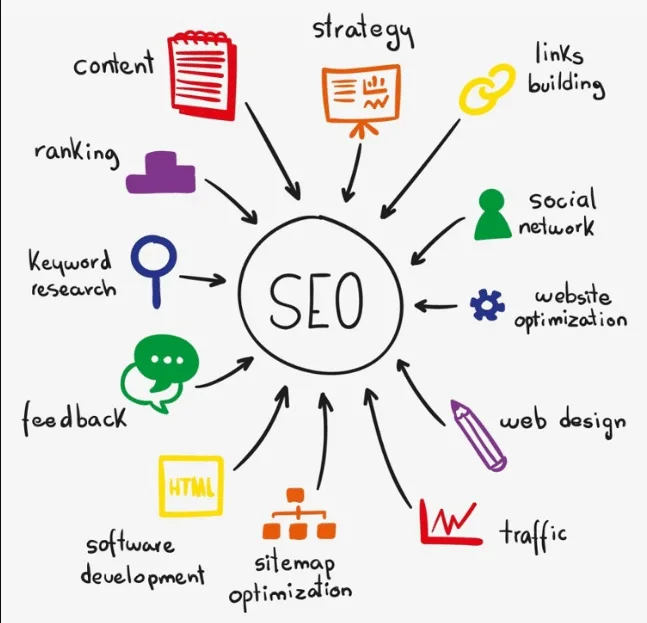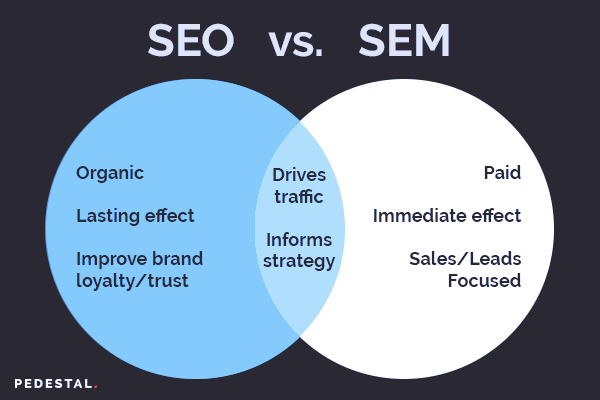SEO or search engine optimization is the process of increasing traffic to your website. This technique aims to enhance both the quality and quantity of leads. It provides organic growth for a company from online searches.
In layperson’s terms — consider looking for a keyword or phrase on Google. Based on what you type into the search bar, the search engine shows you relevant results. But the way for your company to reach the top of the search is SEO.
Using content, design changes, user-experience enhancement, and much more, a brand can drive the website better. We will get into the details of this later in this article.
But what if a brand chooses not to invest in SEO? Will that affect the outcome of its digital presence?
Why Invest In SEO.
Google, or any other search engine, is not a person or directly run by one. It reflects results based on the search done by users. Google has a technology called crawler that combs the internet for content and then distributes them based on the information it reads.
For example, if you are a website that sells clothes. When Google crawler arrives on your page, they see keywords like dresses, clothes, accessories, etc. It then categorizes you as a brand that has information and reflects your page when any of those keywords are typed into the search bar.
This process might seem simple, but it takes a long time to build this elaborate database to prove your worth to a search engine. This is where the right SEO practices can help make a difference.
There is also the factor of completion. To consider the same example, there is more than one brand online that sells clothes. To get to the front of the page, you also battle all these other companies using the same tricks.
We can further fragment the understanding of SEO into three significant subsections:
Traffic Volume
The only reason you own a website is to direct people to it and then later sell your product or service. This website, or page, will need the right kind of optimization for a higher number of people to click.
To put it most simply — no one goes to page two of a google search. So you need to make your way to the front page if you want the traffic to reach you.
Traffic Quality
Now, merely having a truckload of visitors does not do any good for your brand. You will need a user who is searching for exactly the same product you are selling. This narrowing of the funnel can only happen from accurate SEO.
To state an example, if you are a business that sells organic fruits and vegetables. You will want to target people who are health-freaks or fitness enthusiasts. This process means your website content and design should cater to these kinds of people.
A user who searches for the words “benefits of organic vegetables” is more inclined to buy from you. Rather than someone who looks for “cheap vegetables near me.”
SEO, in a nutshell, helps you divert the ideal target audience to your home-page. This practice will inevitably enhance sales, conversions, or engagements.
Visibility
Apart from just selling products, brand awareness also plays a key role. Brand awareness is the practice of creating a positive image of your company in the end-user’s eyes.
If a user sees your brand more often, they tend to associate it with a trustworthy name. With SEO, your brand is sure to meet new eyeballs each day.
Doing The Right SEO
Bruno Estrella, who owns oversees organic growth at Webflow, said: “SEO is all about partnering with Google to provide the best content possible, not about tricking Google. So, build your content thinking about the people who will read, not about Google crawlers.”
There are a ton of factors that can affect the SEO of your page. However, some of the importance of them all is as follows.
Domain and Page-level Links
In simple words, this the ease of use of your website and the website’s fluidity to move from one-page-to-another. This result is influenced by the quality of links to the domain, the PageRank, the link distribution, and backlinks.
Content Features
This is the factor that depends on the quality of content you upload on your website. The more relevant, up-to-date, and original the content on your page — the better they rank on search results.
This end-goal is why many companies add blogs, videos, and highly-optimized content copy on the website and landing pages.
This process is also called keyword optimization, which means fixing your website to reflect on the optimal keyword usage search.
User-Traffic and Design
The traffic of the user helps to drive more traffic to the website. This also means that the users coming to your website should be the perfect match for your demographic.
Other factors like video-embers, mobile integrations, use of heading and alt-text, etc., are also some of the finer factors that influence good SEO.
SEO is Not SEM
We would be remiss not to explain this common misconception when we talk about SEO. SEM of search engine marketing is not the same as optimization.
While optimization is the organic inflow of traffic or getting inbound leads, SEM is used for ads or pay-per-clicks to rank higher on a search result.
If you notice any search result, they have a few links at the top of the page marked with the words “Ads.” These are brands that pay Google a small amount each time a user clicks. The brands all bid on keywords, and the cost of each click is determined by the search volumes’ popularity.
Final Thoughts,
So how important is SEO? The answer is apparent. There are hardly any benefits of owning an excellent product, and no users buy or invest in them. The only way to reach more people is by finding a way to get their phone screen.
SEO also has other benefits outside of traffic. They also help you collect interesting user-insights, provide better brand recognition, help enhance your public image and build trust in the target users.





